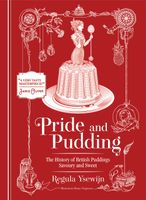Advertisement
Blancmange
Appears in
Published 2016
Mentioned in the prologue to
Blancmange was a dish for the elite in the Middle Ages; its ingredients of rice, almonds, flavourings such as saffron and garnishes such as pomegranate were exotic and luxurious and only available to those with deep pockets. By the fifteenth century, however, many of these exotic goods, including rice, were being cultivated in Europe, making them more widely available – though still only among the higher tiers of society – rather than exclusively for the king’s table.

